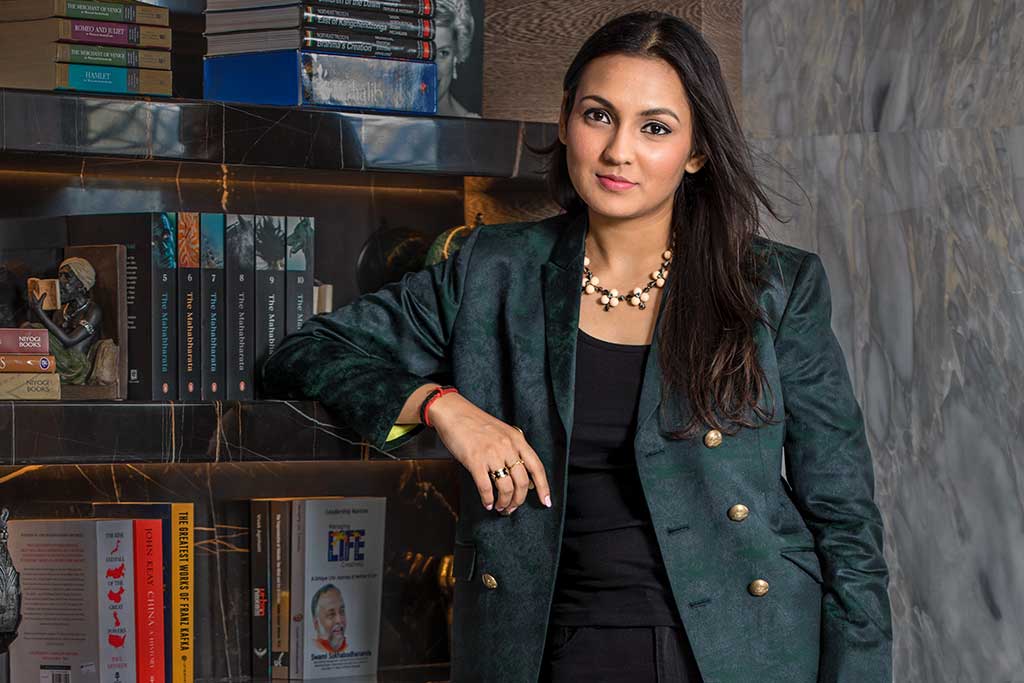Harsh Goenka, Chairman, RPG Group
The trigger for this article came from a friend, interestingly enough a Gujarati industrialist who remarked, “You Marwaris have lost the Midas touch!”
Common perception and public commentary certainly seemed to corroborate his observation and I was also inclined to agree with him. After all, business discourse in our country since the last decade has overwhelmingly been dominated by a few families—and they aren’t Marwaris!
Just the other day, or so I felt, the Birlas, Singhanias, Bajajs, Mittals had been making headlines. But they were now no longer visually prominent. Had they really lost the Midas touch? The comment got me thinking and intrigued enough to delve into it.
My first point of search was data on the Top 50 Business Houses in India. In 1964 there were 13 top Marwari families comprising 26 per cent of the highest echelon in our country. In 1990 the figure had increased to 14 families comprising 28 per cent, and in 2000 it remained static at 14 Marwari Business Houses encompassing 28 per cent of the pie. Consulting the Forbes list of billionaires revealed another interesting statistic. Comparing the number of Marwaris in 2013 that made it to the list of top 100 billionaires of India with those in 2022 showed that while there were 29 Marwaris in 2013, in 2022 the number had gone down to 26, but the number of Marwaris in the first 10 had risen from 2 to 4 in the same period.
While these figures showed the community certainly remained as relevant as in earlier decades as one of the top wealth creators of our country, it was equally obvious they no longer occupied center stage in public discussions.
Historically, Marwaris were amongst the earliest communities that participated in nascent commercial activities under the British and flourished. A hard working and frugal community from the arid region of Marwar in the Thar Desert, they inhabited a barren land with few wealth creating avenues. Innately astute, they migrated to where-ever opportunities beckoned and became first rate financiers, money lenders and traders.
At the dawn of independence they were already moneyed and experienced, and were in an advantageous position to seize the opportunities that arose as a young country developed its own industries and manufacturing sector. The post-independence era witnessed a significant shift in the economic landscape of India. Along with the Tatas, many Marwari business houses dominated the Indian business space. The most prominent business community in India till the late 90s, they significantly contributed to India’s industrial growth. Entrepreneurial as well as shrewd negotiators, the Marwaris established their empires in sectors like textiles, cement, metals, chemicals, tea and jute, by putting up greenfield factories or acquiring sound British companies as the colonisers departed the shores. Their keen understanding of costs and sense of financial risk management set the stage for their rise in the realms of industry as well as the financial services sector.
This dominance continued till liberalisation set the stage for the opening of the economy and an entire slew of new sectors came on the scene. Unfortunately, this time round, the Marwaris were not in a position to take advantage of the opportunities, and this became a watershed moment signaling their fall from dominance. A number of reasons can be attributed to this.
With their core talents of money management, understanding of commodity markets and efficient cost controlling methodologies, the Marwaris instinctively gravitated only to those industries and businesses which gave them a natural leverage and comfort. Their education was also largely to support and enhance this expertise, with most of their youth choosing the commerce stream or chartered accountancy for further studies.
Unfortunately, this single-mindedness, while it certainly helped them retain their hold on their businesses, did not allow them to expand their vision to other newer sectors, especially information and technology, and this made them particularly ill-equipped to take on the new challenges when the economy opened up, leaving the floor empty for a number of new communities and business houses to step in. A Marwari friend analysed this: “We were more comfortable with fixed assets and more tangible business rather than those involving R&D, marketing, or tech and innovation. Sadly on hindsight, we did not even favour education in engineering or chemical sciences.”
An examination of the most value-creating businesses in the post libéralisation era and the lack of presence of Marwaris in these sectors, elucidates how the Marwari mindset restricted their expansion into new age industries. Foremost among them is IT where we had the rapid rise of giants like TCS, HCL, Wipro and Infosys. The Marwaris were virtually nonexistent in this sector. Similarly, FMCG was amongst the fastest growing sectors with Godrej, Pidilite, Marico, Britannia, Dabur and Parle being the frontrunners with a token presence of the Marwaris with the Emami group and Ravi Jaipuria (Varun Beverages). The Pharma sector, one of India’s most value creating sectors for decades, have had Sun Pharma, Serum Institute, Torrent, Intas, Zydus, Mankind and Cipla, with Lupin being the sole representative of the Marwaris in an otherwise large field. Telecom, India’s sunrise industry of the 2000s, have seen only Airtel and Reliance emerging in virtually a two-horse race. The auto sector has been dominated by Tata, Mahindra, Hinduja, Hero Motors and TVS with Bajaj being the sole Marwari representative. The real estate sector has DLF, Oberois and Rahejas, with Lodhas being the lone notable Marwari. However, the Chemicals sector which has Tata, Nirma, United Phosphorus, SRF amongst large players has a somewhat decent presence of Marwaris in Singhals (PI group), Birlas, Taparias (Supreme Industries) and Bhartias (Jubilant).
Scanning the core manufacturing or financial services sectors, the picture is markedly different. Take metals where Jindals, Birlas and Anil Agarwal’s Vedanta have near total dominance. Or cement where Birlas, Bangurs, Dalmias, Singhanias are the most prominent players. Or even the stock markets, where Rakesh Jhunjhunwala and Radhakishan Damani loomed large. A large number of Marwaris moved out of the country and some became immensely successful like LN Mittal and SP Lohia, but once again only in traditional industries like steel and chemicals respectively.
In addition to this, the Marwaris were not very adept at managing government and bureaucracy in nudging the policy framework which is why they are relatively less visible in infrastructure as well.
Another reason for the deceleration of the Marwari ascent was an interesting lack of drive for growth and expansion. A few important reasons contributed to this. Marwaris had a very strong and tight knit joint family system, where the patriarch ensured an equal distribution of wealth and workload among all the family members irrespective of their contribution or capacity. As hard work and innovation went unrewarded, and the tight grip of the system made it impossible to leave its folds, this acted as a disincentive to the more ambitious, brighter members. It was also often the case that the patriarch held the reins tightly for long years preventing young blood to wield power or expand or innovate. Yet another cause for possible stagnation was complacency. There is a famous adage that the first generation creates the wealth, the second generation consolidates it while the third generation squanders it. The Marwaris were early movers in the creation scene, so by the turn of the century they were well ensconced and rich and had lost the drive for toil and innovation, preferring pursuits of leisure, art and golf. Several had become capital consumers rather than wealth creators. Another unique feature that needs mentioning is that the Marwari mindset was discouraging of their women participating in the business. This precluded a large chunk of their community contributing significantly to their success. Except for a few women like Dipali Goenka of Welspun or Vinati Saraf Mutreja, there are hardly any examples of Marwari women at the helm.
But the Wheel of Fortune is once again turning the Marwari way. With the slow disintegration of the joint family system and the advent of nuclear families, higher quality education, exposure to global modern management techniques and greater emphasis on better corporate governance has rekindled a new hunger for success amongst the gen-next Marwaris and a fresh upsurgence is on the way. India’s vibrant start up ecosystem has a healthy representation of Marwari entrepreneurs like Sachin and Binny Bansal (ex-Flipkart), Ritesh Agarwal (OYO), Prateek Maheshwari (Physicswallah), Anupam Mittal (Shaadi.com), Mukesh Bansal (Myntra) and Harsh Jain (Dream 11) to name a few.
So my friend, the Marwari community and their Midas touch is nowhere near being written off! A new era is dawning.
Recent Posts
Discover Your Perfect Honeymoon in the Maldives
For Indian couples embarking on their journey of togetherness, the Maldives has long held an almost mythical allure - a tapestry of turquoise
Jewels Fit For Generations : The Nemichand Bamalwa Story
Since 1987, Nemichand Bamalwa Jewellers has been more than just a name; it is a legacy of trust, craftsmanship, and innovation.
Welcome to "What's Your Plan?"
This vibrant social hub by DJRS Hospitality blends chic vibes with gourmet bites,
Rajasthan’s Crafty Fashion Takeover
Rajasthan, India’s desert jewel, is a repository of exquisite and time-honoured crafts.
‘Mercii’ Beaucoup, Mumbai!
Stepping into Mercii at 81 Crest, Khar, feels like entering a world where gratitude is plated with every exquisite bite.
Game. Set. Watch: Omega Celebrates Smriti Mehra
Luxury Watch Boutique Time Avenue, Mumbai, in collaboration with Omega, hosted a special event to honour none other than Smriti “Simi” Mehra,
Sand, Sea & Sky - High Thrills
Whether you’re soaking in serene natural beauty or diving into extravagant fun, the UAE offers the perfect setting for an unforgettable family getaway.
Dr. Anuja Luniya Shows You How to Stress Less, Live More
Meet Dr. Anuja Luniya, physiotherapist by degree, stress strategist by passion, and your go-to guru for turning everyday chaos into calm.
Breitling's 140th-Anniversary Vintage Watch Exhibition: An Unmissable Showcase
The Breitling Heritage Exhibition, a remarkable showcase of the brand’s most iconic timepieces from its 140-year history, has been on an extensive global tour with 55 stops across four continents.
Dawn to Dusk with Sidhart Pansari: Steering Primarc's Legacy into the Future
We follow the dynamic director of the fastascendant Primarc Group
4 Perfect Getaway Resorts Near Mumbai
For those looking to break away from the urban bustle, India's hidden nature
48 Hours In Canberra
Canberra is a vibrant city with a rich culture, awe-inspiring natural landscapes, adventure-filed activities, and hospitable locals.
Understated Power
In the charming town of Shillong, Meghalaya, golf is more than just a game—it's a family affair for Gaurav and Lakshya Bajaj.
Understated Power
The Lexus LX500d is a rare sight on the roads, and this exclusivity is where its distinctive charms resides.
The Money Manager
Engaging young, ambitious, tech-savvy successors to manage family wealth is a rising global need among the super-rich.



















